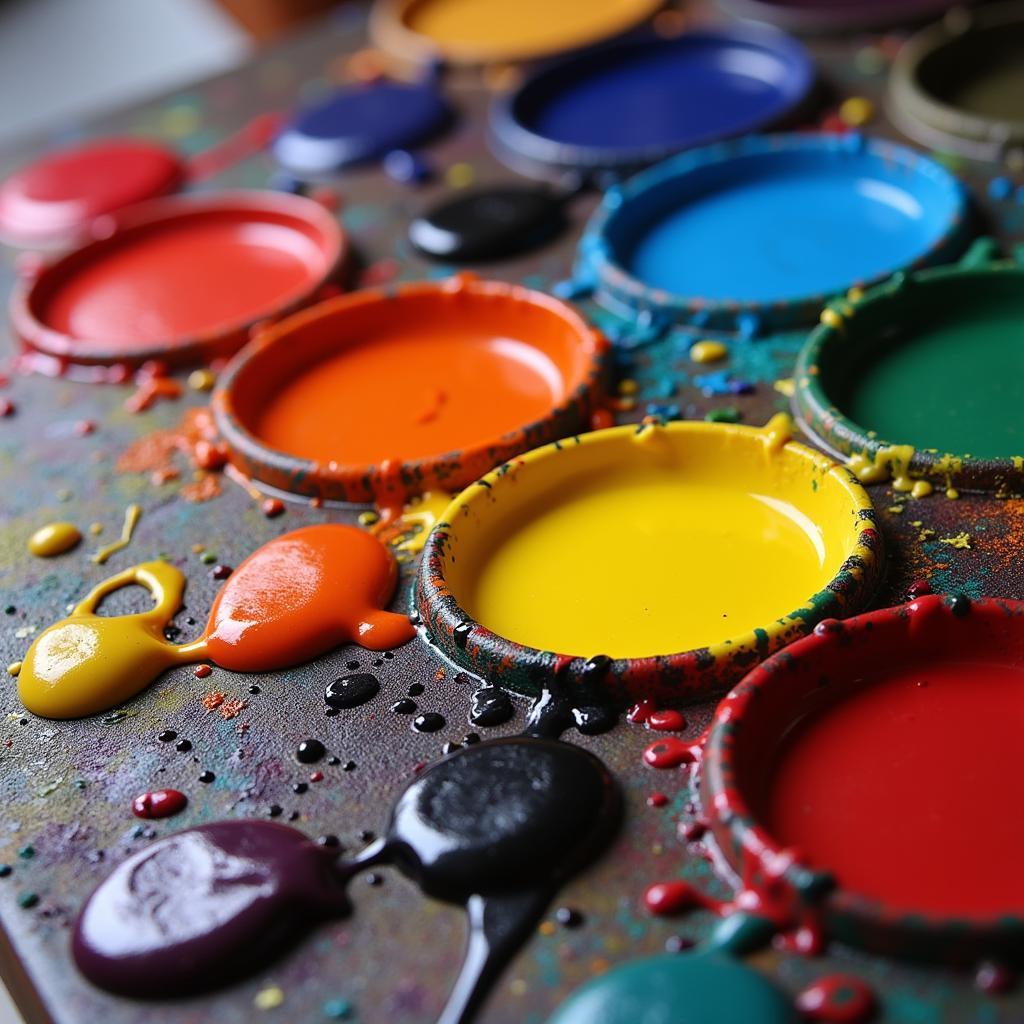We’ve all heard the saying, “Black goes with everything.” But have you ever wondered why? Is it because black is the absence of color? Or is it the ultimate culmination of all colors combined? Let’s dive into the fascinating world of color theory to answer the age-old question: Is Black All Colors Combined?
The Science of Color: Absorption and Reflection
To understand the nature of black, we need to explore how we perceive color. When light hits an object, the object absorbs certain wavelengths of light and reflects others. The reflected wavelengths reach our eyes, and our brains interpret them as specific colors. For example, a ripe strawberry absorbs most wavelengths except for red, which it reflects, making it appear red to us.
So where does black fit into all of this? Black objects absorb nearly all wavelengths of visible light, reflecting very little back to our eyes. This lack of reflected light is what we perceive as black.
Mixing Colors: Pigments vs. Light
The way we mix colors also plays a crucial role in understanding black. There are two primary ways to mix colors:
-
Subtractive color mixing: This involves mixing pigments, like those found in paint or ink. When we mix pigments, we’re essentially subtracting wavelengths of light. Each pigment absorbs a certain range of wavelengths, so mixing more pigments together results in fewer wavelengths being reflected, leading to darker colors. Eventually, with enough pigments, very little light is reflected, creating black.
 Mixing pigments
Mixing pigments -
Additive color mixing: This method involves mixing light sources, like those found on your computer screen or stage lighting. With additive mixing, we’re adding wavelengths of light. The primary colors of light are red, green, and blue (RGB). When all three are combined at full intensity, they create white light. Removing these colors individually results in black.
Is Black Really All Colors Combined?
The answer depends on how you’re mixing colors.
-
With pigments (like paint), yes, black can be created by mixing many different colors together. This is because each pigment absorbs certain wavelengths of light, and combining them leads to a wider range of wavelengths being absorbed, eventually resulting in black.
-
With light, black is the absence of light, not the combination of all colors. While it might seem counterintuitive, combining all colors of light actually creates white.
Black in Art and Design
Black holds a unique position in art and design. It’s often associated with power, elegance, sophistication, and mystery. Artists use black to create contrast, depth, and dramatic effects.
“Black is a color of immense power in art and design,” says renowned artist and color theorist, Dr. Anya Sharma. “It can evoke a range of emotions, from calmness to intensity, and it plays a vital role in creating balance and harmony in visual compositions.”
Black in our Daily Lives
Beyond art and design, black is pervasive in our daily lives. From clothing to technology to nature, black surrounds us. We see it in the night sky, in the depths of the ocean, and in the shadows that dance around us.
Black’s versatility and timeless appeal make it a constant presence in our world.
Conclusion
So, is black all colors combined? The answer, like many things in life, is not so simple. It depends on whether we’re talking about pigments or light. But regardless of the scientific explanation, black continues to fascinate us with its depth, complexity, and undeniable elegance.
Whether you see it as the absence of color or the culmination of them all, black’s impact on our visual world is undeniable. It’s a color that commands attention, evokes emotion, and adds a touch of sophistication to everything it touches.

